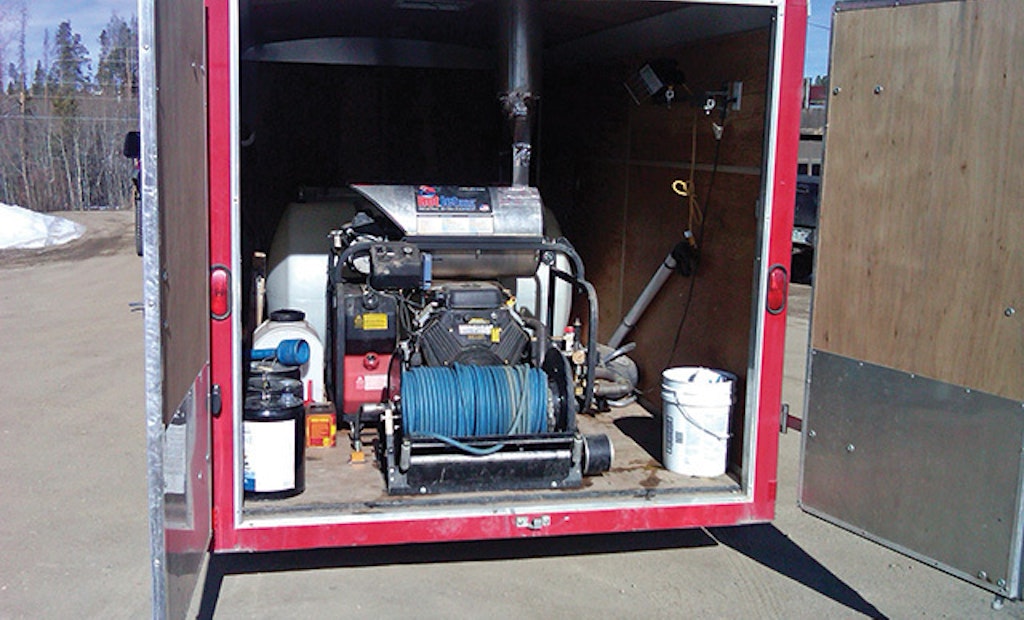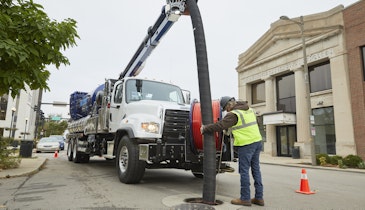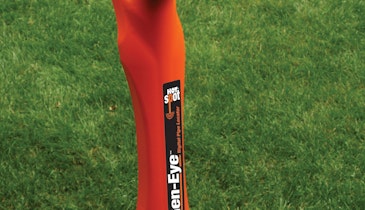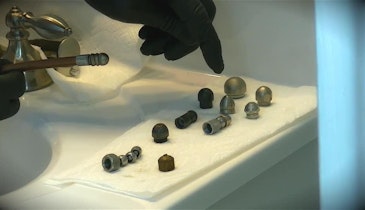
Interested in Cleaning?
Get Cleaning articles, news and videos right in your inbox! Sign up now.
Cleaning + Get AlertsJust like in sports, savvy contractors are always on the lookout for a game-changer – that one piece of equipment that can dramatically improve productivity, efficiency and the bottom line. At Grand Lake Plumbing & Heating Co. in Grand Lake, Colo., that unit is a custom-built HotJet USA water jetter.
Why? The unit enables technicians to thaw out frozen pipelines during frigid Colorado winters in significantly less time than with the smaller portable jetters they used to use.
"It's the best piece of equipment we've ever bought in terms of getting a new kind of work and being more efficient doing it," says Chris Wood, the company's service manager. "In all honesty, it's pretty amazing what the HotJet water jetter has been able to do for us.
"First of all, it opened up a whole new realm of business for us," he continues. "Without this unit, I'd be sending customers to my competitors who have the capability to get the job done in an efficient manner. Secondly, it helps us thaw sewer lines much more efficiently than our smaller portable sewer machines, which run off tap-water pressure."
As an example, Wood points to a particularly tough job one winter: thawing out a 3-inch frozen water main that services a water treatment facility on an area ranch. Technicians ended up clearing out about 750 feet of ice in 13 hours.
"It would have been impossible to do with our smaller jetters," he says. "It was frozen solid every inch of the way because the frost line was unusually deep that year."
Sheer power makes the biggest difference in productivity: about 2,800 psi at a maximum of 25 gpm compared to 1,200 psi at 8 gpm generated by the smaller jetter units. That's the difference between moving feet per minute versus inches per minute, respectively, Wood says.
"In a typical, 100-foot-long frozen sewer line, it might take us several hours to get through it with the smaller jetters," Wood explains. "But with this bigger machine, it sometimes takes as little as 30 minutes. Over the course of a year, that's a ton of time."
The ability to produce hotter water – up to 200 degrees – and carry more of it, also improves productivity. The company's smaller jetters can supply only 40 to 50 gallons of hot water at a time, which means time-consuming – and efficiency-killing – refills, Wood says.
"It might take us a full day to do a job if we have to wait for a water heater to recover and keep producing the same amount of hot water as our 350-gallon tank carries," he says. "That's a big-time improvement in profitability, too, because we might be able to do three or four jobs in a day instead of one. And it improves customer satisfaction because they don't have to wait as long."
A 35 hp Vanguard gas engine powers the unit, which features a 350-gallon water tank; a Hotsy 5900 kerosene heating unit; a hose reel that can carry 100 feet of supply-line hose; a hose reel with an additional 300 feet of pressure hose that can handle up to 4,000 psi; and two additional 100-foot pressure hoses for even longer drain lines.
The additional hose capacity also improves productivity by allowing crews to perform commercial jobs from one entry point. Otherwise, they'd have to use numerous entry points, which involves reeling and unreeling hose and moving the trailer in between entries. On average, this reduces time on jobs by about 25 percent, Wood estimates, which he notes is a substantial amount over the course of a year.
Frozen residential and commercial lateral lines are an ongoing problem in the region from about January through April. Wood says Grand Lake Plumbing specified an 18-foot Haulmark enclosed trailer to protect components from the brutally cold winter temperatures in Colorado, which often dip below zero. An electric heater keeps the inside warm. Moreover, the sides of the trailer act as a "moving billboard" that effectively promotes the company, Wood says.
In summer, crews don't use the HotJet unit as frequently. But when winter rolls around, the workhorse gets busy again, increasing customer satisfaction and improving productivity.
"I think it's more than paid for itself," Wood says.






